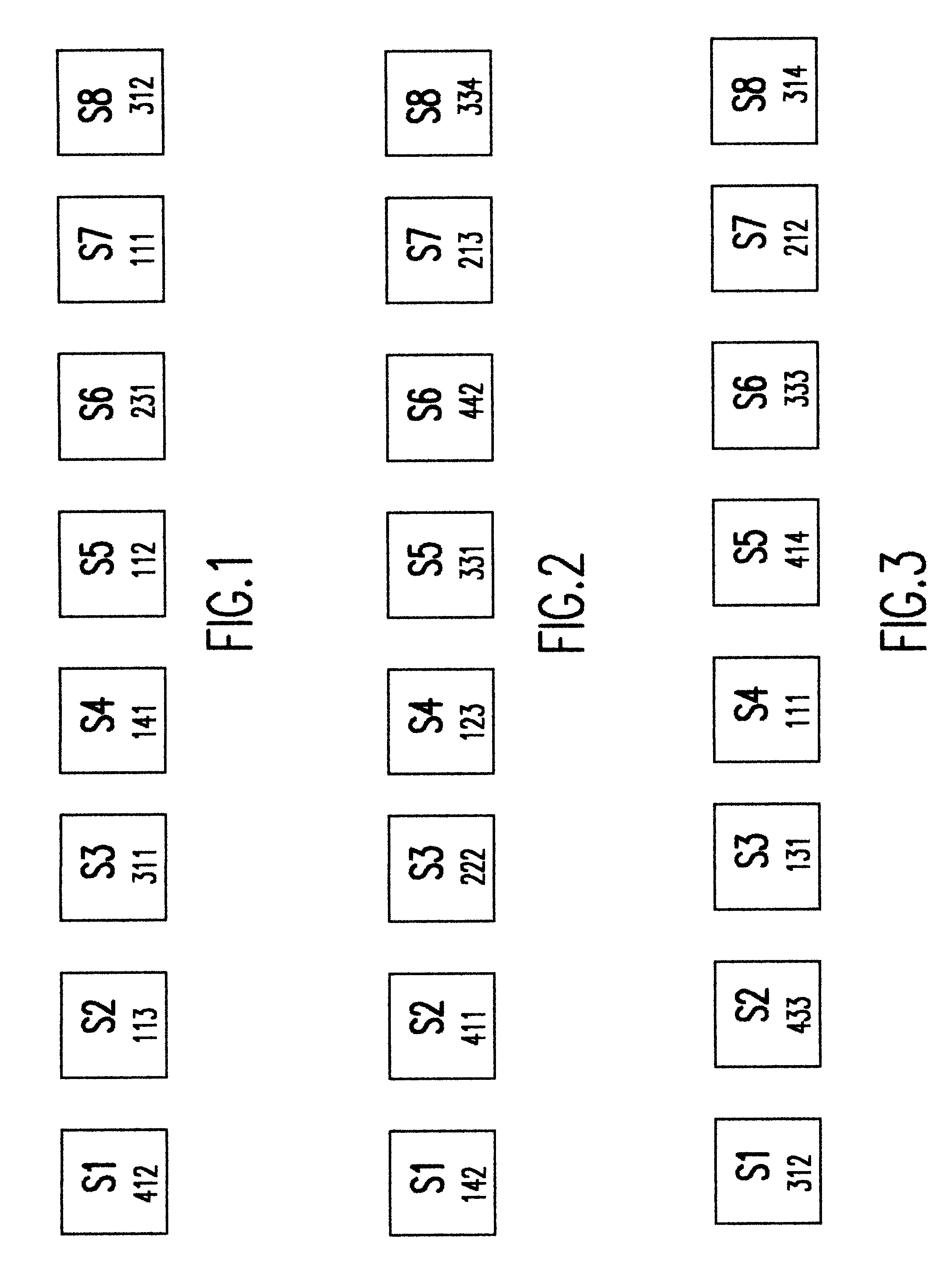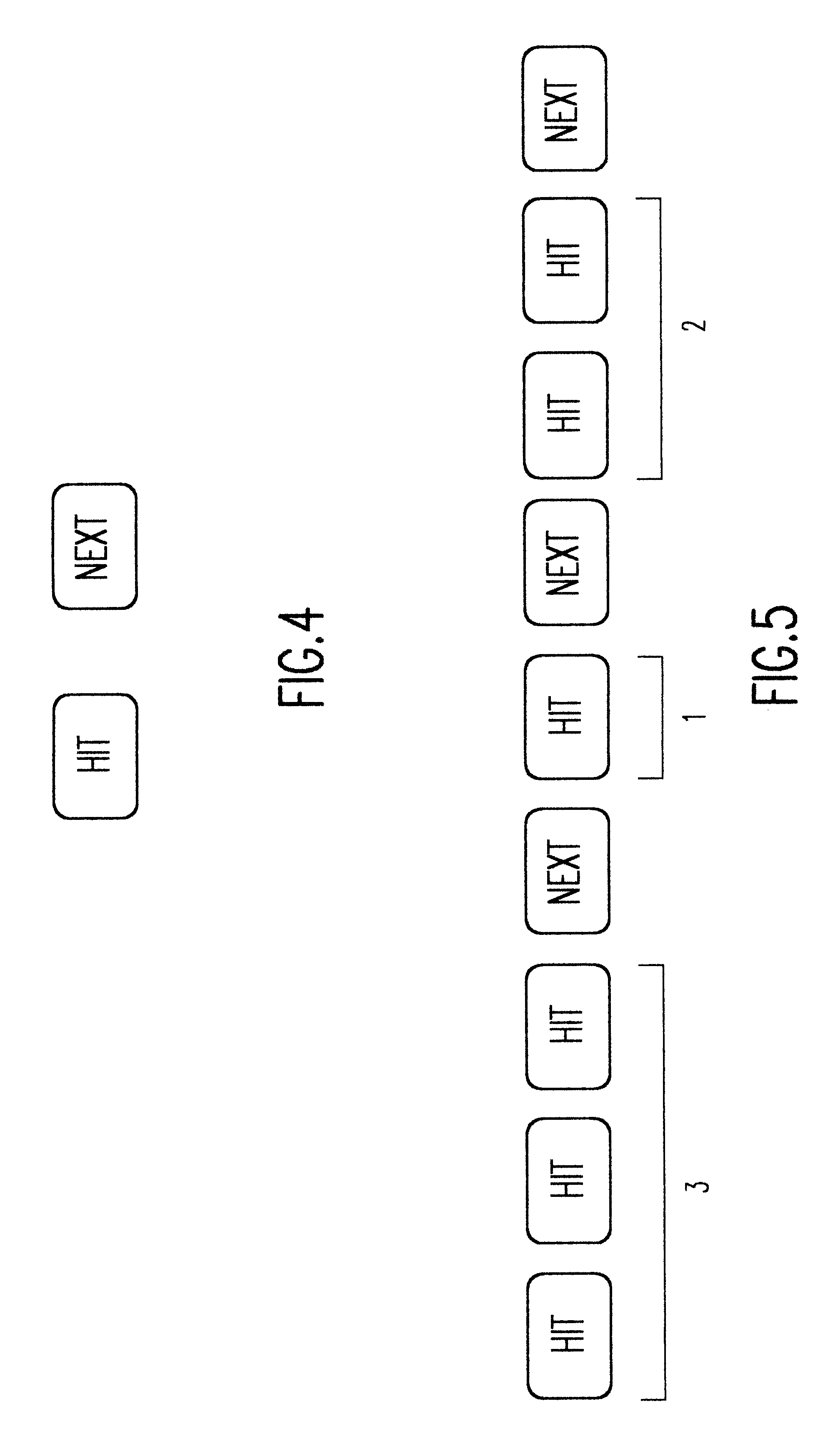Method for non-disclosing password entry
a password and non-disclosure technology, applied in the field of new password or passcode entry methods, can solve the problems of inability to change the user's password or passcode usually, unauthorized persons can still exploit the access to the system, and unauthorized observers are not able to observ
- Summary
- Abstract
- Description
- Claims
- Application Information
AI Technical Summary
Benefits of technology
Problems solved by technology
Method used
Image
Examples
Embodiment Construction
In the method of password entry according to the present invention, the characters (or symbols) used to form passwords are displayed to the user in a fixed, known format. Therefore, the user can easily locate the characters or symbols corresponding to his or her password. In this description, the terms "characters" and "symbols" are used interchangeably, and while in general usage, "characters" refer to alphanumeric characters, without loss of generality, other characters or symbols may be used in the practice of the invention.
In the display, for each character corresponding to his or her password, a unique n-digit, m-ary code word is associated. The user has to enter the n digits of the m-ary code for each character of the password. Also, for each character entry, the m-ary codes corresponding to the different characters are pseudo-randomly associated so that detection of password by repeated long term observations is prevented. For sake of simplicity in explanation, an example sys...
PUM
 Login to View More
Login to View More Abstract
Description
Claims
Application Information
 Login to View More
Login to View More - R&D
- Intellectual Property
- Life Sciences
- Materials
- Tech Scout
- Unparalleled Data Quality
- Higher Quality Content
- 60% Fewer Hallucinations
Browse by: Latest US Patents, China's latest patents, Technical Efficacy Thesaurus, Application Domain, Technology Topic, Popular Technical Reports.
© 2025 PatSnap. All rights reserved.Legal|Privacy policy|Modern Slavery Act Transparency Statement|Sitemap|About US| Contact US: help@patsnap.com



